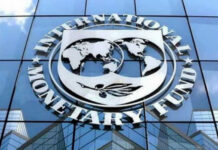
Mixed opinions followed after the signing of the new trade bloc—the Regional Comprehensive Economic Partnership (RCEP) on November 15, 2020. Negotiated over a period of eight years since 2012, this is termed as the world’s largest free trade agreement (FTA). Fifteen economies of the deal—Australia, China, Japan, New Zealand, South Korea, plus 10 members of the Association of Southeast Asian Nations (Asean) that include Brunei, Cambodia, Indonesia, Laos, Malaysia, Myanmar, the Philippines, Singapore, Thailand and Vietnam—cover about 30 percent of global gross domestic product and almost one third of the global population.
Its geo-economic-political significance is high
As the global economy is facing unprecedented challenge in terms of low economic and trade performances due to the Covid-19 pandemic, RCEP looks promising for the signatory countries. However, the trade deal is also viewed as a step towards a new world order which is predicted to be dominated by Asia.
The timing of the signing of RCEP deal is of great significance. The world is currently ravaged by the coronavirus pandemic. At the same time, one of the mighty countries of the world, the USA is busy with extraordinary domestic political crisis since Donald Trump refuses to concede his defeat in the presidential elections held in early November this year. Ironically, the USA has failed to show any leadership both in tackling the pandemic and dealing with the associated economic fallout.
So, RCEP is thought to be a vehicle of strengthening China’s influence in the Asia-Pacific region in the absence of the USA in similar trade deals in the region. The Trump administration had earlier abandoned the Comprehensive and Progressive Agreement for Trans-Pacific Partnership (CPTPP) in January 2017. The 12 countries of the CPTPP were—Australia, Brunei, Canada, Chile, Japan, Malaysia, Mexico, New Zealand, Peru, Singapore, Vietnam, and the USA. Six countries—Australia, Japan, Malaysia, New Zealand, Singapore and Vietnam—are common in both the agreements. Hence TPP could be a balancing factor over China’s leadership in the region.
Though TPP is much more ambitious than RCEP as it covers issues such as environmental and labour standards, RCEP provides enormous opportunities for its members to grow more. With India’s withdrawal from the pact in November 2019, China will gain influence through further value chain integration in the 14 RCEP markets.
The pattern of Bangladesh’s exports to RCEP countries indicates that Bangladesh may not worry too much at this moment for a few reasons. First, Bangladesh’s exports to these countries is about 10 percent of total exports. Second, as a least developed country (LDC), Bangladesh enjoys various types of preferential treatments to a number of RCEP countries including Australia, China, Japan, New Zealand, South Korea and Thailand. Within RCEP region, Bangladesh’s exports to these countries are more than 80 percent.
Third, realisation of benefits from such multi-country trade deals takes time. Indeed, elimination of 90 percent tariffs in RCEP economies will take two decades from the time it comes into force. Most importantly, the agreement has to be approved by at least six Asean countries and three non-Asean partner countries. However, experts say it might take the whole of 2021 to complete this process.
But Bangladesh’s worry is on its way
Three LDCs such as Cambodia, Laos and Myanmar are members of the new pact. Among them, both Laos and Myanmar have gained eligibility to graduate from the LDC category in 2018 along with Bangladesh. By being part of the new trade bloc, these LDCs will continue to enjoy preferential market access even after their graduation. However, once Bangladesh graduates in 2024 and finishes the three-year grace period after graduation in 2027, it will lose preferential treatment in RCEP markets which are now providing such facility to Bangladesh.
So, at present import restrictions may benefit some domestic companies, but in the long run Bangladeshi exports will suffer.
Bangladesh’s biggest worry will be how to compete with Vietnam. Despite several challenges, Bangladesh has been able to keep its position in the global market in the case of readymade garments (RMG) exports. Though Bangladesh gets duty free quota free (DFQF) market access in the EU market, this will cease after 2027. However, Vietnam has signed bilateral FTA with the European Union (EU) which will guarantee its preferential market access for its exports to the EU markets. Vietnam is also a member of the US-led TPP which is currently stalled. As the USA sees a regime change, the revival of TPP agreement by the president-elect Joe Biden is a possibility. Now with the membership in RCEP also, Vietnam will put Bangladesh into a disadvantageous position.
Bangladesh will be challenged by the new trade bloc in other ways also. These types of mega trade deals are not confined within trade only. It creates opportunities for investment and strengthening supply chains. RCEP countries will also enjoy a liberal “rule of origin”. To put simply, rules of origin are the criteria which determine the share of local content of product to benefit from lower tariff when exported to another country. RCEP members can avail the preferential tariffs on products on a more flexible rules of origin. This will also attract investment among the member countries and increase exports to its members under preferential trade arrangements. To them, Bangladesh or other non-RCEP countries will not be attractive investment destinations.
Preparing for the new reality
Since the Doha Round trade negotiations of the World Trade Organisation is still mired in stalemate, countries have fallen back on FTAs and regional trade agreements (RTA). Bangladesh’s loss due to RCEP and other RTAs can be mitigated to some extent through active participation in the FTAs. Bangladesh as a member of a number of FTAs including the Bay of Bengal Initiative for Multi-Sectoral Technical and Economic Cooperation (BIMSTEC), can effectively utilise these platforms to benefit more from regional trade integration.
The apprehension of losing the export markets to competing countries through RCEP has led to the idea that Bangladesh should join the pact, if approached by RCEP members or even proactively. This will require development of Bangladesh’s negotiating capacity to deal with the complex nature of these agreements. This should also be complemented with a comprehensive assessment of the implications of the agreement on investment and revenue earned through duties.
This is because firstly, RCEP is a reciprocal agreement. This means in exchange of getting preferential market access into RCEP countries, Bangladesh will also have to provide the same to all RCEP members. This is not the case with the EU. The EU provides non-reciprocal DFQF market access. Therefore, the consequences on the domestic market will have to be properly evaluated before entering into such deals.
Second, benefiting from such deals also require a lot of groundwork. Such deals set high standards for trade and investment. The deal also includes provisions on intellectual property rights, e-commerce, telecommunications, and financial and professional services. Bangladesh will have to undertake major regulatory and economic reforms to meet those stringent requirements. The efficiency level has to be improved to compete in a tougher trade regime. Such preparation will also help Bangladesh’s smooth and sustainable graduation.
Dr Fahmida Khatun is the Executive Director at the Centre for Policy Dialogue.









